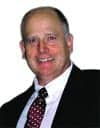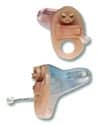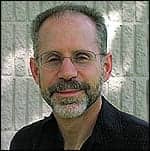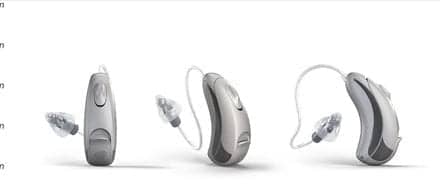Unimpressed with the hearing instruments he saw on the market in the 1980s, Roger Juneau set out to change the industry.
Harahan, La, is just a spit away from downtown New Orleans. The small town of about 10,000 inhabitants is only 10 miles from the city known for great jazz, wild Mardi Gras parties, and, more recently, Hurricane Katrina. Harahan also rests slightly above its neighboring areas. Those few feet meant a lot to General Hearing Instruments’ headquarters when Katrina touched down last fall. “We feel like we dodged a bullet,” says Roger Juneau, president of the hearing products manufacturer.

Although the company was not directly hit by the hurricane, the proverbial bullet grazed the business: winds uprooted many of the old oak trees that surrounded the plant, and tore the roof off of the 7,000-square-foot facility.
Many of the company’s 26 employees suffered even greater losses. Two employees completely lost their homes, while another employee’s house will have to be demolished due to water damage.
Much to Juneau’s surprise, General Hearing’s business associates came to the company’s aid. “Our industry was incredible,” he says. “We got countless e-mails, cards, and unsolicited contributions from everybody—friends, family, people within the city, and people outside of the community. Three of our major vendors adopted families. … They made such a big difference.”
There were even some customers who made personal donations to the company, which in turn distributed the funds to employees.

Fate did offer a thin silver lining for General Hearing during the hurricane: The company was in the process of adding another floor to its facility, which provided an additional five-inch slab of concrete to protect the factory, although some water seeped down the walls and claimed some casualties, including a few computers and products.
The rains that did find their way into the plant also destroyed a large batch of the company’s new hearing aid cleaning system, the Spin Doctor, which is slated to debut at the annual AAA meeting in April.
The idea for the cleaning product actually took its first steps toward becoming a reality a few years ago after Juneau realized that soft products, such as latex and silicone used in hearing instruments, tend to fill with wax and condensation more quickly than their acrylic counterparts. This was partially due to the seal. Juneau issued a challenge to the engineering department at General Hearing: produce an effective cleaning system that is easy for customers to use.
Before the engineers went to the drawing board, they perused the market to see what was available and found products such as vacuums, vacuum domes, and heater systems. “Frankly, the only one that works reasonably well is a little suction unit, but it damages probably as many receivers as it helps. In the hands of a professional, no problem … but I don’t think my mother could [operate] it,” says Juneau, who talks a bit like an umpire: he calls them the way he sees them.

The engineers went to work and came up with a patented design that relies on a centrifuge. The Spin Doctor is designed for hearing aid applications and spins the units until a certain g-force is attained. In addition, the hearing aids are attached at a specific angle to aid in the cleaning.
Heeding Juneau’s challenge, the system is simple to operate. Users insert the hearing product into the unit, close it, and hit the start button; the machine does the rest, cleaning the hearing aid by ejecting heavy vapor and solids in 30 to 60 seconds.
That ease of operation did not happen overnight. The engineering department had to overcome multiple hurdles during development. “When you get into the details of how to get a certain RPM when you have varying weights and sizes, it’s amazing. It’s not a horsepower issue, but the way torque is developed. That was a real challenge. It has to be properly balanced, and this device is self-balancing,” Juneau says.
While the Spin Doctor is designed for soft products, it does work on other products as well. “When you get down to the details of what wax is, you’re still dealing with heat transfer; you’re dealing with the saturated atmosphere of atomized wax that condenses inside the receiver. So when you really look at the stuff under some of the microscopes, it’s amazing how much yucky oil you get in that device. You can suck it [out] if you want, but the problem is that it creates other issues for you,” Juneau says. “With this device, you spin it at a certain RPM … it’s at such a g-force that nothing is going to stay in there.”
With such a force, General Hearing also tested the Spin Doctor’s effect on the hearing devices themselves. The company cleaned some units 1,000 times—a number that is roughly equal to 3 years’ worth of daily cleanings, even though that is more frequent than most users would clean their hearing aids. Juneau says there were no failures.
The Spin Doctor has been in use in General Hearing’s service department for 3 years.
The Road to a Career In Hearing Products
Juneau entered the hearing business in the early 1980s in Roanoke, Va, setting up an earmold laboratory for a manufacturer. When he was not working, he liked to stretch his legs by riding his bike along the Blue Ridge Parkway. At the time, Sony had released its Walkman cassette players and he enjoyed the great sound quality while on his rides. That sound quality stood out even more one particular day when Juneau was at work and was asked to deliver a hearing aid to a customer.


After he fit his customer, Juneau changed his tune, however. The elderly woman had not been able to hear for a long time, so when Juneau fit her with the new device, the tears of joy that ran down her face said everything: She could hear again. The emotion was contagious, as Juneau got choked up himself.
That experience, combined with Sony’s technology, created a dream. “My goal has always been to develop a true high-fidelity hearing device. I believe we have that now,” Juneau says. “We believe the contributions that we’ve made in the development of soft technology and where we’re going to take the soft technology in its final embodiment are truly going to change the hearing industry and it will finally deliver that sound quality of the Sony Walkman or better.”
Juneau has always been excited about the business of hearing health care. Early on, he felt it was a pioneering industry—and that was a big part of the initial attraction. During his career, Juneau has also worked with people who make their living creating sounds, including musicians Stevie Wonder and Al Jarreau.
Juneau cofounded General Hearing in December 1984. The company went into production in April 1985, making traditional amplification devices. From day one, the company’s founders wanted to be different. More than two decades later, General Hearing holds numerous patents and manufactures a wide range of products, including open-ear, ready-to-wear, soft technology and hi-fi digital technology, as well as devices for tinnitus patients.
Initially, General Hearing made the majority of its income from hearing aid sales. Although the company still considers the devices its passion, today its primary income comes from a mix of sales of hearing aids and tinnitus and hearing protection devices. The company sells its products primarily to the audiological community, but also to some hearing aid dispensing communities, as well as directly to those with severe hearing loss.
General Hearing is also involved with cutting-edge technology, including semi-implantable hearing aids and advanced generation tinnitus products. These grant-funded projects are sometimes conducted in collaboration with major universities or for the government.
One project that some people might not expect a smaller company to sink its teeth into is a documentary. General Hearing is working with Information Television Network, which produces medical and technological programs, to create a documentary on tinnitus. Hurricane Katrina pushed back production on the film, but Juneau expects it will be on television later this year.
Juneau says that since tinnitus is such a controversial field, he wanted to be part of a project that would give the public all of the information they needed to make an educated decision before choosing a specific type of therapy.
General Hearing manufactures multiple tinnitus management devices that include soft and acrylic, ready-wear, custom, and combination circuitry units. These ear-worn devices produce a soft, soothing sound, similar to water from a showerhead, a fountain, or a gently falling rain to help reduce the perceived “loudness” of the tinnitus.
Juneau is passionate about the company’s work in this field; he has been at work during off-hours when phone calls come in from virtually suicidal patients clamoring for the device. He says that increased numbers of tinnitus sufferers are likely to be a result of the war in Iraq, where soldiers are frequently dealing with loud explosions.
“Hyperacusis is the up and coming thing for the audiological community to tackle,” he says. “They’re proving that the ear, like the eye, can adjust.”

General Hearing also has some projects in the works for infants, including the BabySoft, an alternative to BTE devices that delivers broadband digital sound quality, a secure fit, and silicone comfort to babies up to 36 months old. The company is in the process of refining the BabySoft’s design even further.
The company is also working with an ear, nose, and throat specialist who is developing an in-ear device out of soft silicone that can be worn by infants. The design will be self-forming, so that it will be able to grow with the child as he or she ages, extending the life of the device.
One device that Juneau is exceptionally proud of is the company’s Digi K, a digitally programmable amplification device. Although it was patented in 1997, it has evolved significantly since then. “In 1997, it was a problem child. In 1998, it was still a problem. But with each passing year, we’ve gotten better and better with the reliability to where we have really narrowed down the performance to daily maintenance,” he says. “When you get into a soft product, it creates an acoustic seal that is unlike any other acoustic seal. You don’t have peripheral leakage so everything goes through the microprocessor in the hearing aid and you end up with a sound quality that’s totally manageable … you end up with a sound quality that’s excellent.”
Juneau says the Digi K was the first product that General Hearing produced that approached the sound quality of the Walkman headphones that made such an impression on him years before.
Fruits of Labor
The company’s products are the results of countless hours of work by a crew of employees. Juneau runs the business using a “walk away” philosophy. “You surround yourself with people [who are] as capable as you can get. People who have that same burning desire to accomplish something, and you assign the goal and you set them off,” he says. “[Then you say], ‘If you get stuck, come see me. If you’re not stuck, don’t worry about me.’ But, if I’m not checking on you every day, you’re probably doing pretty good. If I’m checking on you every day, you probably won’t be here [for long].”
Most of General Hearing’s employees wear multiple hats in departments that include engineering, electronics, a shell laboratory, a soft ear laboratory, sales, accounting, and graphic arts.
Juneau jokes that working at General Electric earlier in his life affected the naming of his own company. But the moniker has its benefit. “The one thing is, if you tell somebody you work for General Hearing Instruments, they don’t ask you what you do,” Juneau says.
He says that “like most small business owners, I think about getting out of the business once or twice a week… but I’ve never had to ‘go to work’ since I’ve been in it—it’s been more of a passion that I’ve been consumed with.
“I still enjoy it today after 25 years. I enjoy it more today than I ever have and I’m more excited about the products that are coming down the line,” he says. N
Stephen Krcmar is a staff writer for Hearing Products Report.




